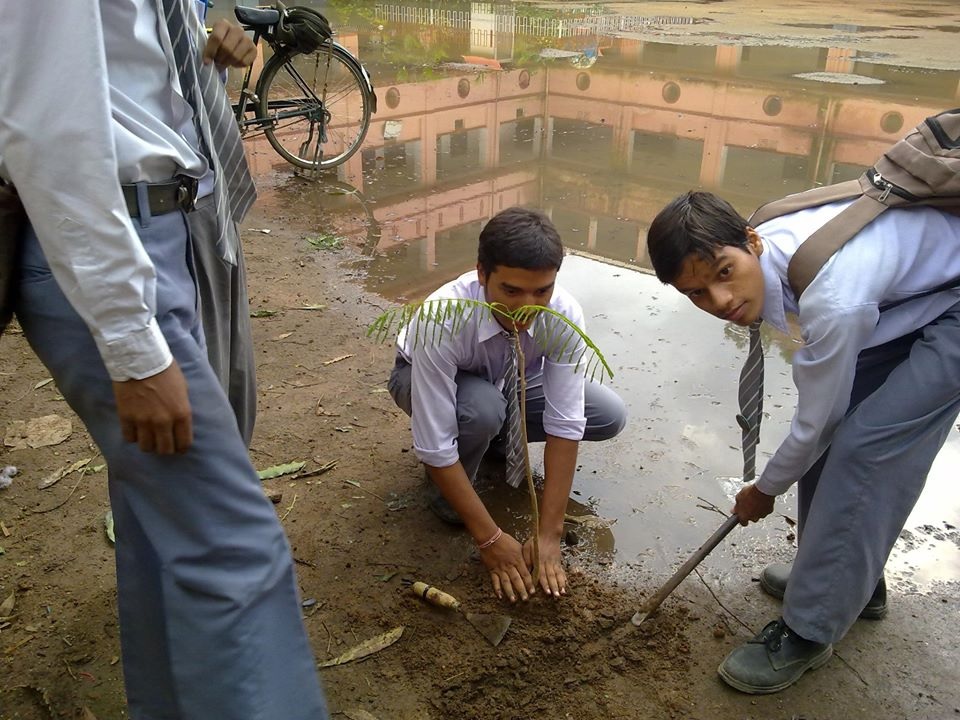The National Policy on Education- 1986, renewed in 1992, states- “There is a paramount need to create a consciousness of the environment and it must permeate all ages and all sections of society, beginning with the child.” It has also been highlighted in the National Curriculum Framework for School Education-2000, that the Environmental Education in needed to be included at all levels of schooling. I don’t know if it is enshrined in the draft New Education Policy 2020.
Article 51 A of Part IV A of the Indian Constitution has laid down the Fundamental Duties to “protect and improve the natural environment including forests, lakes, rivers, wildlife and to have compassion for the living creatures. In view of emerging environmental problems at regional, national and international levels, it was felt that the fragmented model of environmental education did not serve the purpose, as it did not succeed to generate a concern that may lead to effective action for conserving and further improving the environment.

Hence, NCERT as per directions of Hon’ble Supreme Court of India designed the syllabi of EE for different classes, which emphasize the emotional and attitudinal aspects of learners’ personality along with the requisite cognitive component. It is a value based and action oriented syllabus that would lead from knowledge to feeling and finally to appropriate action.
The syllabus of Environmental Education at this level aims at generating among learners an awareness of and sensitivity to the total environment in a holistic manner and the problems associated with it. It is intended to equip the learners with the requisite knowledge of the total environment and necessary skills for solving environmental problems in a positive and sustainable manner.
The goals of environmental education efforts around the world are similar-to maintain and improve environmental quality and to prevent future environmental problems. In part, environmental education is information education, increasing student knowledge about the environment. Students learn about global warming, solid waste, and other environmental problems; they learn about ecology and how the world “works”; they learn about the consequences of environmental degradation; and they learn about their role in creating and preventing environmental problems.
Environmental education also increases awareness about issues and an understanding of personal values by digging into attitudes and beliefs and helping students evaluate and clarify their feelings about the environment and how they contribute to environmental problems. It helps individuals understand that there are conflicting values among people and that these conflicts must be addressed to ultimately prevent and solve environmental problems.
Environmental education is also practical education: how to plant a tree, how to apply pesticides carefully, and how to plant crops to lessen environmental damage. And finally, environmental education stresses citizen action skills-from writing an effective letter to lobbying village councils, local and state governments, and national and international organizations.
Transactional Modalities
A number of the transactional modalities have been suggested by experts across the country and most of them have been included in the National Curriculum Framework. Some of these transactional modalities of Environmental Education are mentioned below-
- Narration of events, experience and stories
- Assignments and projects
- Field Trips and visits
- Formation of Eco-clubs, National Green Corps, Nature Clubs, VIPNET- Clubs etc.
- Field Studies and Surveys of the Status of Environmental Resources, Identification of problems and search for solutions, developing strategies for conservation and Awareness Building etc.
- Brain Storming and Quizzes
- Role Play and Drama, Script-Writing and enactment etc.
- Lectures and demonstrations
- Discussions, and
- Case-studies and many more.
Sustenance of environment, building of a vigilant society, and promotion of strategies for sustainable development, maintenance of health-standards, hygiene and sanitation are some of the most important jobs that are to be done in the current situation. These jobs can be done by the development of healthy personal and social attitudes in student- community.
The Environmental Education can be an effective instrument that can be used in the development of civic consciousness and inculcation of positive attitudes among students towards the environment, its protection, preservation and conservation. These things are desired to be promoted in effective ways through the involvement of school, parents and the community.
At secondary level students need to “be introduced to the problems of environment we live in, the social responsibility of the community in maintaining it, and making it healthy. This is necessary due to the fact that living conditions of people have become complex due to rapid technological advancements, urbanization and population explosion.
ROLE OF PARENTS
The role of parents in environmental education is very important. They need to be consulted and involved in the total curriculum transaction. Their basic role is to provide help and support to institutions in activities involving both teachers and students. Thus the awareness of students about their surroundings will be enhanced, and they will come to realize the importance of projects and will try to promote the efforts for conservation.
Some of the areas that have been identified for interaction among school, community and other organizations to help learners are mentioned below-
- Understanding the local environmental problems and finding out their solutions,
- Keeping the local environment clean and healthy,
- Using natural resources in judicious manners,
- Sensitizing the community about environmental concerns, and
- Participating in the environmental conservation and protection activities.
ROLE OF COMMUNITY IN ENVIRONMENTAL EDUCATION
The contribution of community can be taken in following areas-
- Sharing knowledge and information, and participating in actions related to environmental improvements,
- Sharing basic resources- including both the material and human resources,
- Running campaigns including adoption of heritage centres, parks and playgrounds, cleaning ponds and lakes, and maintaining parks and gardens,
- Celebrating festivals, international and national days etc.
- Extending support to nature clubs, fairs, cultural and social activities,
- Monitoring qualities of water and air, taking steps for rain-water harvesting and taking steps for the conservation of water by forming a group of likeminded people,
- Creating awareness for the protection of environment in general and its different components, as per need, in particular.





2 thoughts on “Teaching the Environmental Education”